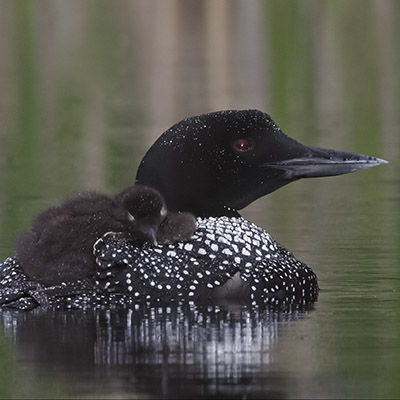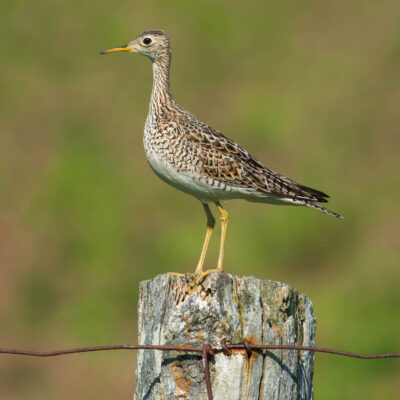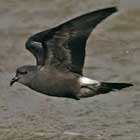Waterbirds: Important Indicators of Ecosystem Health
Who We Are
BRI’s Center for Waterbird Studies focuses on loons, waterfowl, and marine birds (including coastal birds). These birds rely on aquatic habitats for part or all of their annual life cycle, including marine, coastal, and freshwater ecosystems. Given their use of these critical habitats, waterbirds can be important indicators of ecosystem health and viability.
With an innovative approach to wildlife research, our biologists continually develop new methods to improve fieldwork and data analysis. Over the course of more than three decades, our biologists perfected nighttime loon capture techniques. These methods, however, proved inadequate in the Arctic. In response, field crews developed site-specific methodology that allowed the capture of loons during the long daylight hours in that region. Pushing the boundaries of loon research further, BRI biologists pioneered the development of methods and protocols for successful loon translocation. This extensive knowledge and experience with loons guides all of our waterbird studies.
For more information, view our qualifications sheet here.
Center Staff
Who We Are
Co-Directors: Iain Stenhouse, Ph.D.; Lucas Savoy, B.S.
Contributing Staff: Andrew Gilbert, M.S.; Bill Hanson, B.S.; Dustin Meattey, M.S.; Shearon Murphy, B.S.; Kevin Regan, M.S.; Tim Welch, B.S.

Who We Are

Programs and Studies

Loon Program
The Loon Program is dedicated to assessing current and emerging threats to loons, and to collaborating with the many agencies and organizations that work to conserve loon populations across the Northern Hemisphere.

Waterfowl Program
BRI’s Waterfowl Program primarily focuses its research on conservation needs for waterfowl throughout North America. We collaborate with state and federal agencies, as well as other organizations involved in waterfowl conservation.

Marine Bird Program
Arctic Terns, courtship
Marine birds are found across the globe, where they live at the interface between air, land, and sea. The harsh conditions have caused unique adaptations in their physiology and morphology and require enormous flexibility in life history strategies.

Shorebird Program
Shorebirds undertake some of the most spectacular long-distance migrations of any avian taxa. BRI conducts shorebird research through inventory and population studies, movement and tracking studies, contaminants monitoring, and avian health studies.
News and Features
May 2023
 BRI staff and others have recently published the first paper coming out of the Ecosystem Dynamics project for NYSERDA. This paper presents novel methods for describing multi-scale trophic associations, combining movement analyses of marine birds, including non-breeding gannets, red-throated loons, and long-tailed ducks, with estimates of forage fish surface aggregations from digital aerial survey data and species occupancy from bottom trawl survey data. Read more here.
BRI staff and others have recently published the first paper coming out of the Ecosystem Dynamics project for NYSERDA. This paper presents novel methods for describing multi-scale trophic associations, combining movement analyses of marine birds, including non-breeding gannets, red-throated loons, and long-tailed ducks, with estimates of forage fish surface aggregations from digital aerial survey data and species occupancy from bottom trawl survey data. Read more here.
March 2023
 To support the State of Maine Department of Inland Fisheries and Wildlife during the offshore wind commercial planning process, BRI conducted a desktop study and literature review to determine regions of importance for breeding and migrating marine birds in the Gulf of Maine to inform regions of higher and lower risk to marine birds. The study relied on three primary analyses: a buffer around colonial nesting marine bird islands during the breeding season based on the maximum foraging distance; a combined exposure and vulnerability assessment using regional marine bird models; and movement models of three diving bird species. Read the study here.
To support the State of Maine Department of Inland Fisheries and Wildlife during the offshore wind commercial planning process, BRI conducted a desktop study and literature review to determine regions of importance for breeding and migrating marine birds in the Gulf of Maine to inform regions of higher and lower risk to marine birds. The study relied on three primary analyses: a buffer around colonial nesting marine bird islands during the breeding season based on the maximum foraging distance; a combined exposure and vulnerability assessment using regional marine bird models; and movement models of three diving bird species. Read the study here.




